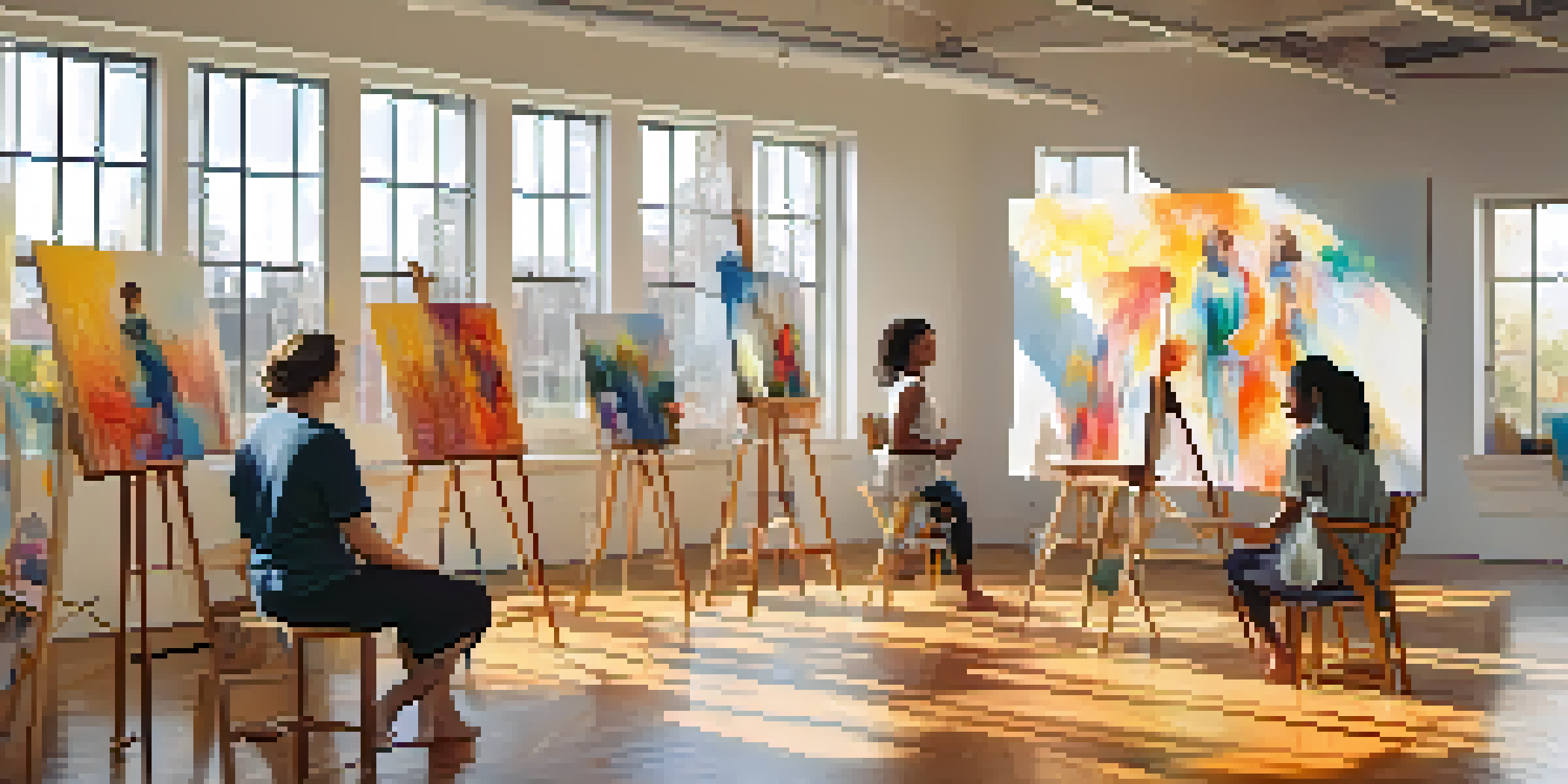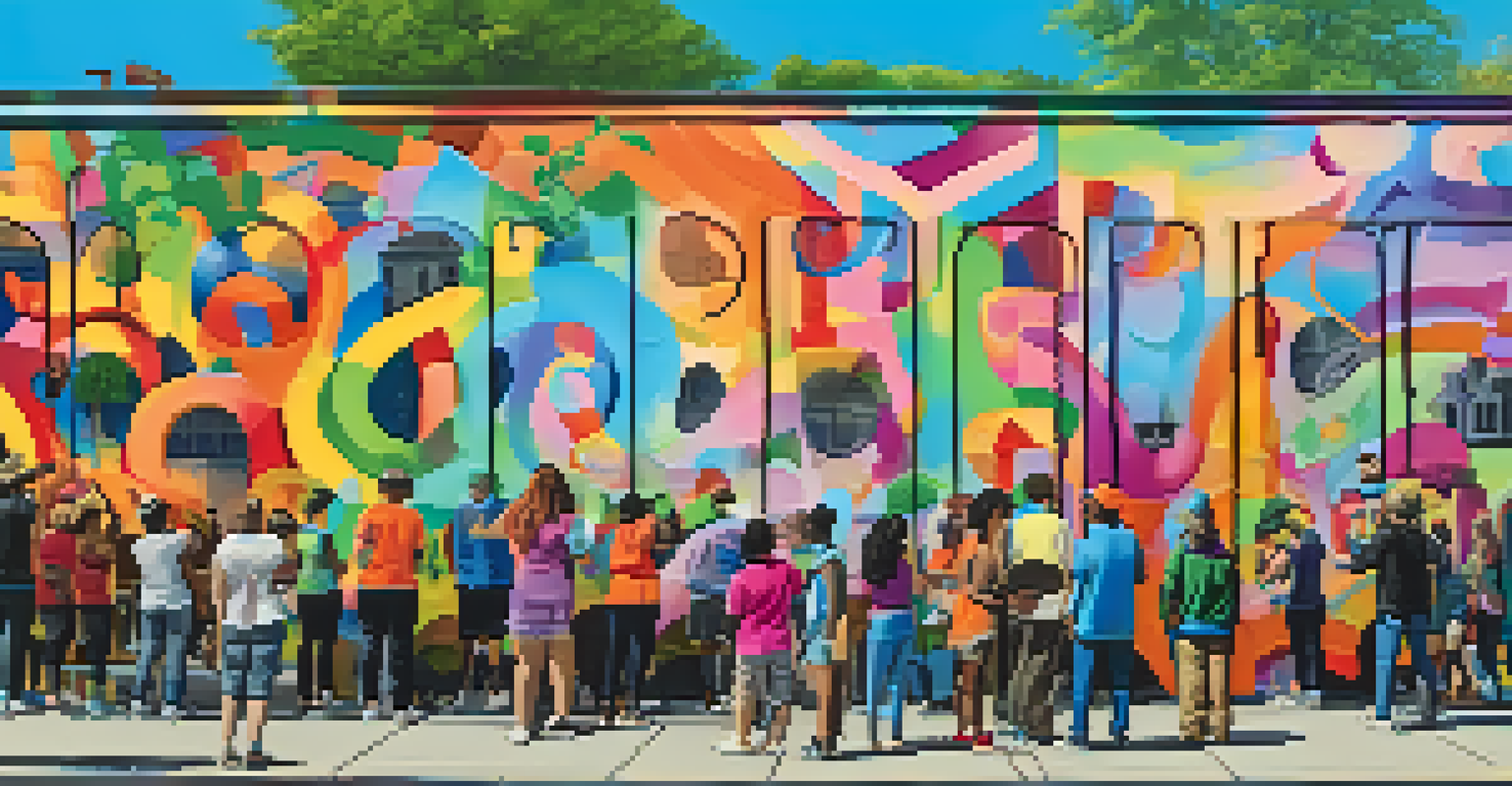Using Art to Facilitate Conversations on Mental Health

Introduction: The Power of Art in Mental Health Conversations
Art has a unique ability to express feelings that words often can't. It can bridge the gap between personal experiences and shared understanding, making it a powerful tool for discussing mental health. By using various forms of art, we can create a safe space for dialogue that might otherwise feel intimidating or overwhelming.
Art is not what you see, but what you make others see.
Whether it's through painting, music, or theater, art allows individuals to convey their emotions and experiences in a relatable way. This can encourage others to open up, fostering a sense of community and support. In a world where mental health discussions are becoming increasingly important, art can play a pivotal role in breaking down barriers.
As we delve into this topic, we'll explore different art forms that facilitate these conversations, share real-life examples, and emphasize the importance of creativity in mental health advocacy.
Art Therapy: A Professional Approach to Healing
Art therapy is a well-established practice that uses creative processes to help individuals explore their emotions and experiences. By engaging in artistic activities, clients can express themselves in ways that traditional talk therapy may not allow. This form of therapy can be especially beneficial for those who find it difficult to articulate their feelings verbally.

Through guided sessions, therapists encourage participants to create art that reflects their inner thoughts and struggles. The resulting artwork often serves as a starting point for deeper conversations about mental health. It's a powerful reminder that healing can take many forms, and art is a valid and effective pathway.
Art as a Dialogue Tool
Art creates a safe space for discussing mental health, allowing individuals to express emotions that words often cannot.
Art therapy not only aids in personal healing but also promotes understanding and empathy among participants, creating connections that can lead to meaningful discussions about mental health.
Community Art Projects: Fostering Connection and Awareness
Community art projects can serve as a catalyst for conversations about mental health, bringing people together to share their experiences. These initiatives often invite individuals to collaborate on murals, sculptures, or public installations that reflect themes of mental health and well-being. This collaborative effort promotes a sense of belonging and shared purpose.
Creativity takes courage.
One notable example is the 'Before I Die' wall project, where community members write their hopes and dreams on a public wall. This simple act encourages conversations about aspirations, struggles, and mental health challenges. It highlights the universality of these issues and fosters a supportive environment.
Such projects not only raise awareness but also empower individuals to advocate for mental health, making it a community-wide effort rather than a solitary battle.
The Role of Music in Mental Health Discussions
Music is a universal language that can evoke emotions and memories, making it an excellent medium for discussing mental health. Songs often address themes of struggle, resilience, and hope, creating a relatable backdrop for conversations. For many, listening to or creating music provides an emotional outlet and a way to process their feelings.
Support groups sometimes incorporate music therapy, where participants can share songs that resonate with their mental health journeys. This not only opens up discussions but also fosters a sense of camaraderie among participants. Sharing personal stories through music can make the topic of mental health feel less daunting.
Community Projects Build Awareness
Collaborative community art projects foster connection and understanding, empowering individuals to advocate for mental health together.
Whether through lyrics or melodies, music has the power to connect us and remind us that we are not alone in our struggles.
The Impact of Visual Arts on Mental Health Awareness
Visual arts, such as painting, photography, and sculpture, can powerfully convey messages about mental health. Artists can use their work to share personal stories or highlight societal issues related to mental health, sparking conversations among viewers. The impact of seeing emotions translated into visual form can be profound and thought-provoking.
Exhibitions focused on mental health topics encourage visitors to reflect on their own experiences and foster discussions around stigma and understanding. By making mental health visible through art, we can challenge misconceptions and promote empathy and support.
For instance, installations that depict the realities of living with mental health conditions can make the subject more relatable and less stigmatized, encouraging open dialogue.
Using Theater as a Platform for Mental Health Conversations
Theater has a long history of addressing complex social issues, including mental health. Through storytelling, characters, and performances, theater can illuminate the struggles faced by individuals living with mental health challenges. This form of art allows audiences to engage with the subject matter on a deeper emotional level, fostering empathy and understanding.
Productions that address mental health themes can spark conversations in the audience, encouraging them to reflect on their own experiences and perceptions. Community theater often invites local voices to share their stories, creating a platform for dialogue that resonates with attendees.
Music and Theater Foster Empathy
Music and theater serve as powerful platforms to explore mental health themes, encouraging open dialogue and emotional connection among audiences.
By bringing mental health issues to the stage, theater not only entertains but also educates and inspires change, making it an essential tool for advocacy.
Conclusion: Embracing Art as a Tool for Mental Health Advocacy
Art can be a powerful ally in the journey of understanding and discussing mental health. It provides a means to express emotions, share experiences, and connect with others on a deeper level. By embracing various art forms, we can create inclusive spaces for conversations that are often avoided or stigmatized.
As we move forward, it's essential to support and participate in artistic initiatives that promote mental health awareness. Whether through personal creativity or community involvement, every contribution helps pave the way for more open discussions.

Ultimately, using art to facilitate conversations about mental health not only benefits individuals but also strengthens the community as a whole, fostering a culture of understanding and support.